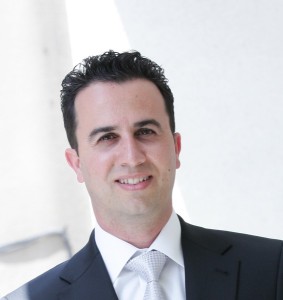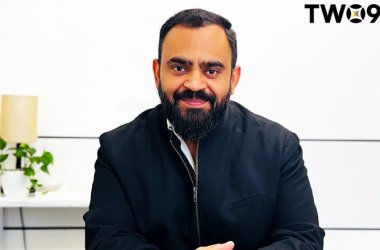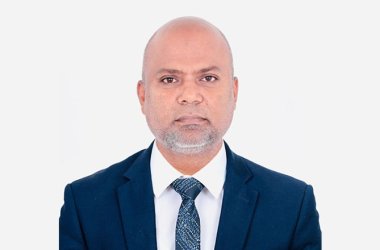
There’s no denying that the Gulf’s mobile broadband penetration is growing fast. But are the networks prepared for this growth? And, if not, what can they do to accommodate this new demand for mobile data? We speak to Dory Chakour, Mobile Broadband Manager, Ericsson Middle East, who explains how using small cells to build heterogenous networks will enable the region’s operators to deliver seamless mobile broadband, no matter how great the demand.
To start off with, can we ask what your definition of a heterogeneous network is?
A heterogeneous network is a network involving a mix of technologies and cell types working together seamlessly. Ericsson believes that the operators should always start to enhance the existing capabilities of their infrastructure. If that is not enough, the next step is to add more sites to improve coverage and capacity. The final step in building heterogeneous networks is to introduce small cells that could vary in size from Micro to pico or Wi-Fi. These small cells can be placed in squares, restaurants, offices or larger shopping malls to provide a better end user experience.
Can you explain how heterogeneous networks will help in coping with the data explosion that is expected to take place with the rise in data usage via smartphones?
A heterogeneous network — based on 3GPP-standardised and coordinated radio network with integrated Wi-Fi, advanced traffic management and high-performance backhaul — can help deliver a consistent, high-quality and seamless mobile broadband experience. Making the right technology choices at the right time is the key to supporting operators in smooth capacity expansion and with maximum efficiency.
How far have the Middle East’s operators come in terms of building heterogeneous networks?
Well, we see that data is growing in the Middle East. Of course, not every operator has the same type of growth on data, but we see at least some operators that are experiencing a huge amount of data growth. And these operators have already started to look into the heterogeneous network options.
I would say that the Gulf’s heterogeneous networks are quite new — small cells in general are quite a new concept. I would say that most operators will be interested in the heterogeneous network at a certain point in time. However, I would say that maybe four, five or six operators are already engaging in looking at the options for going forward with heterogeneous networks.
Is it all about data, or are heterogeneous networks’ uses more far-reaching than that?
Of course, with heterogeneous networks, a part of it is about improving the coverage as well as the capacity. Voice as well will be benefiting from the introduction of heterogeneous networks. But, of course, the main driver for it has been data, because, other than that, if you look at GSM networks, they’ve been good enough to handle the voice traffic so far.
Say an operator wants to upgrade to a heterogeneous network, what kind of investment are we talking about?
That will depend on the size of the operator, on the traffic growth that they are experiencing, or on the way they have built their networks. It’s very difficult to give you a straight-off answer about the amount of investment that they will be putting in. The most important thing is that they do this in the most cost-efficient way, which starts by improving the existing network, and then moving on to adding more sites. The last part is adding the smaller cells. Small cells provide small coverage, so if you have small cells, you need to use many of them to handle the coverage.
What is Ericsson doing to support the growth of heterogeneous networks in the Middle East?
We are helping the operators right now with all kinds of engagements when it comes to what are the best options for the operators, and how they can improve their networks. We also help them with their options when it comes to adding the small cells — so should they go for Micro cells, or should they go with Wi-Fi, or a combination of both? And sometimes we are working with them on POCs and the business cases, as well as the technical details of the solution.
Do you see much competition in this sphere?
Of course, we have our traditional competitors such as Huawei or Alcatel-Lucent and so on. And now, because we talk about the heterogeneous networks — which is more to do with the smaller cells — then we have other players which are coming into the market. We have Cisco and we have some smaller companies which are trying to enter this market.
We are the leaders when it comes to the market share. But we work with a coordinated network, so the smaller cells should talk to the larger cells. And, of course, if you already have the footprint, not many vendors can offer this kind of coordination. I feel that some of the other competitors are trying to niche themselves on some functionalities and key areas, but it will be quite difficult. We will be facing hard competition, but we will be striving to resolve this through our benefits when it comes to products and solutions.
What are some of the biggest challenges that the Middle East’s operators are facing at the moment?
Now the growth is happening around data, we are seeing that some of the operators in the Middle East are still not yet in the smartphone era — they are waiting for smartphones to take off. We need to segment a little bit because you have operators which are already smartphone-oriented, have a high penetration of smartphones and have quite high data revenues. And we have other ones which do not have this. For the ones which are not, the main challenge would be to start pushing the smartphones into their networks, and to be able to get revenue from the smartphone users. For the other operators, which already have big smartphone growth, we see that, for them, the challenge is to be able to monetise the amount of growth they see.
How does Ericsson see the future of data usage via smartphone devices in the region over the coming two to three years?
The data usage via smartphones globally continues to double every year. In the region, we see similar trends with some operators that have already started to experience the smartphone growth. Other operators in the region will start to experience this growth in the coming years.





